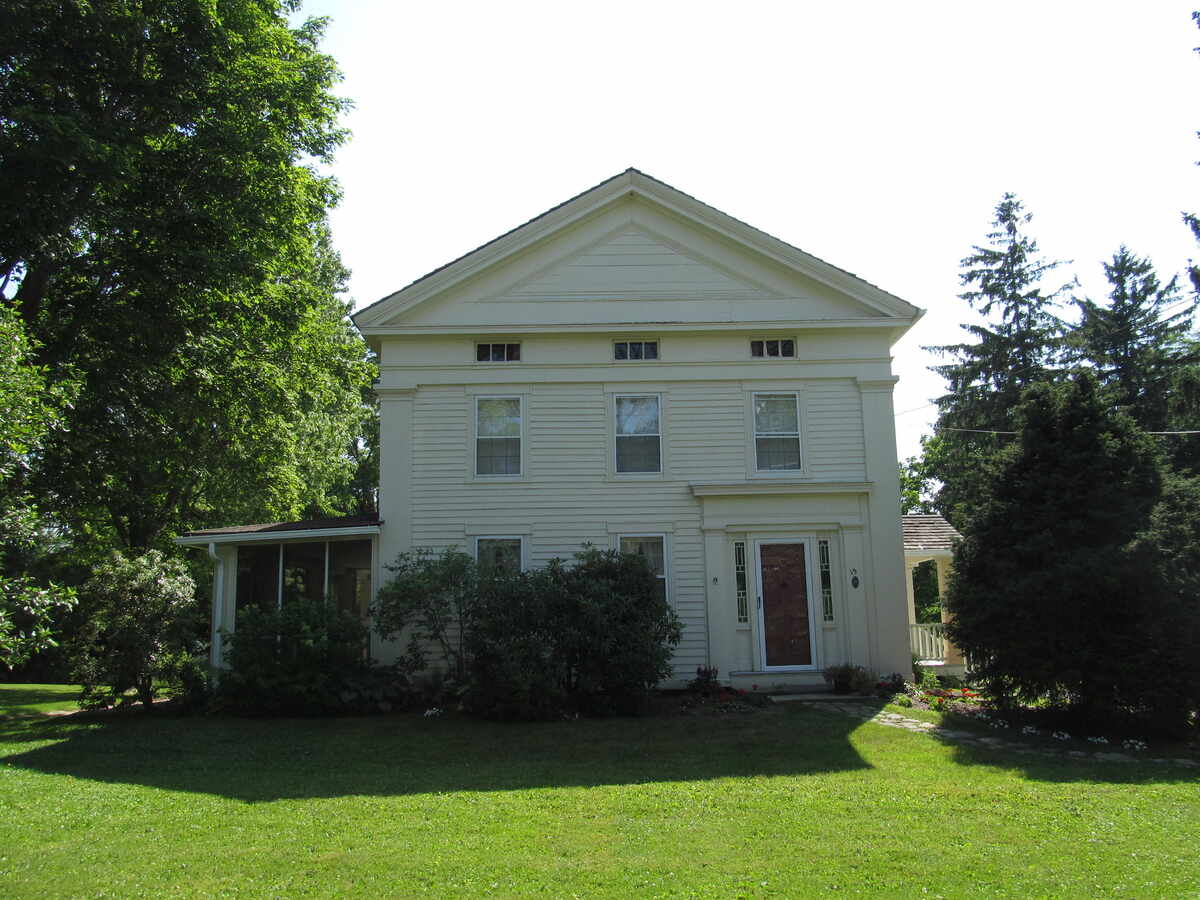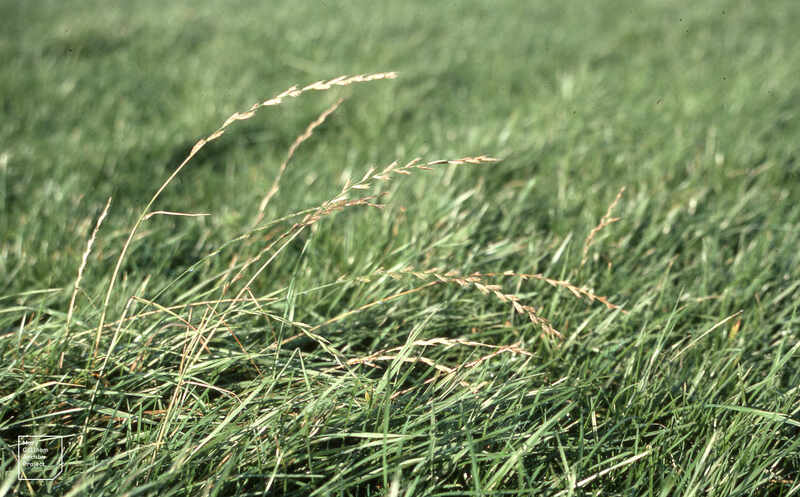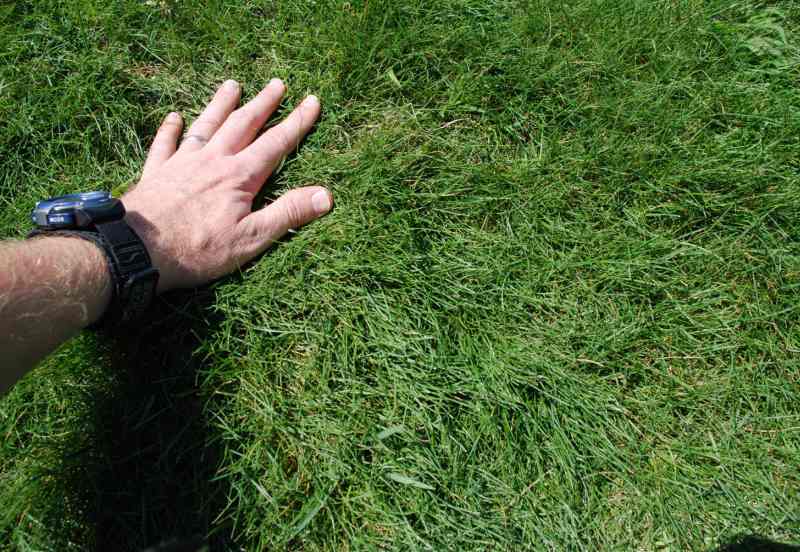
The best time to plant grass seed in Connecticut is in the fall when your soil temperature is between 50 and 75 degrees Fahrenheit. It’s the time when the soil is warm (but not too hot) and perfect for cool-season grass seed germination.
If you have a bare patch of land in Connecticut and want to transform it into a lush green lawn or want to reseed your existing lawn, read on to learn when to plant different types of grass seeds and how to care for newly seeded lawns.
Timing to plant grass seeds in your Connecticut lawn plays the most crucial role. You should always plant your grass in the right season because if not done so, it will not take root. Read below to get familiar with the right timing for planting Connecticut’s most common cool-season grass seeds.
Best Time to Plant Kentucky Bluegrass

Photo Credit: Shutterstock
If you want to grow Kentucky bluegrass in Connecticut, late summer to early fall is the best time. Aim for August to mid-September, in particular when the soil temperature is between 50 and 60 degrees Fahrenheit. The soil is warm but not too hot now, ideal for those Kentucky bluegrass seeds to germinate and establish strong roots.
Also, the air temperature begins to fall slightly, creating comfortable conditions for the grass to grow in. With proper soil preparation and irrigation, you’ll be rewarded with a lush, resilient lawn that will leave your neighbors green with envy!
You can also plant Kentucky bluegrass in spring, but it’s not considered the ideal time because your new grass would have to contend with weeds. And if you apply pre-emergent herbicides in spring, they could prohibit the grass seeds from germinating. Cool-season grasses also require a lot more frequent watering to stay fresh during the summer, especially if they’re just getting established.
So, fall is ideal for sowing Kentucky bluegrass seeds, but they must be planted at least 45 days before the first frost.
Best Time to Plant Perennial Ryegrass

Photo Credit: Dr Mary Gillham Archive Project / Flickr / CC BY 2.0
Perennial ryegrass is best planted in late summer through early fall or late winter through early spring when the soil temperature is not below 50 degrees Fahrenheit. Soil temperatures ranging from 60 to 75 degrees Fahrenheit are ideal for seed germination and establishment of perennial ryegrass.
To maximize success, ensure correct soil preparation, continuous soil moisture during germination, and gentle watering adjustments as the grass grows. Avoid planting ryegrass in hot temperatures because it might affect this cool-season grass’s growth efficiency.
Best Time to Plant Fine Fescue

Aaron J. Patton, Ph.D. / Turfgrass Extension Specialist at Purdue University
When late summer to early fall rolls around, it’s the time you should plant fine fescue seeds. Planting within this time, when the soil temperature in Connecticut is usually between 60 and 75 degrees Fahrenheit, will result in lush and resilient grass.
The second best time to plant fine fescue is in early spring. It’s an ideal time for the turf’s root development, but the grass seedling will have to contend with weeds for nutrients and water, and the onset of summer may hinder the grass’s growth.
You can also sod your lawn with fescue for faster development, but sod is generally more expensive than grass seeds. Don’t forget to add starter fertilizer to your soil to help the sod establish healthy roots.
Best Time to Plant Tall Fescue

Aaron J. Patton, Ph.D. / Turfgrass Extension Specialist at Purdue University
Like fine fescue, tall fescue is usually planted later in the summer through early fall or late winter to early spring. At these times, the soil temperature is optimal for tall fescue’s growth. Prepare the soil ahead of time to offer your tall fescue the best chance of thriving in the Connecticut climate.
Factors to Consider When Planting Grass Seed in Connecticut
There are several factors that can affect the ideal time to plant grass seed in Connecticut. Let’s go through them.
Type of Grass Seed
Choosing the correct grass type and seed for your Connecticut lawn is critical to its long-term success. The grass species you select should suit the local climate and growing circumstances. Durability, shade tolerance, and maintenance requirements should all be considered.
There are two types of grasses: cool-season grasses and warm-season grasses. Connecticut’s climate is ideal for cool-season grasses like Kentucky bluegrass, fescues, and perennial ryegrass, which thrive in the region’s mild summers and cold winters. You can look at our guide to the best grass seed for Connecticut to help you make the right choice for your lawn.
Soil Temperature
Soil temperature is an important issue to consider when planting new grass. When the soil temperature is within the appropriate range for the grass species you intend to sow, grass seed germination happens. In Connecticut, the grass grows well when the soil is warm but not too hot. Soil temperature should never be below 50 degrees F or above 75 degrees F when you plant cool-season grass seeds.
Monitoring soil temperature is critical because too-cold soil might cause seeds to remain dormant, while too-warm soil can cause poor germination.
Weather
Connecticut is located in the northeastern part of the United States and is one of the coldest states in the U.S. The temperature might vary throughout the year, from warm summers with average high temperatures ranging from the mid-70s to mid-80s Fahrenheit to frosty winters with average temperatures ranging from the mid-20s to mid-30s Fahrenheit. You should be familiar with Connecticut’s weather dynamics to grow a healthier lawn.
Connecticut’s climate varies throughout cities and areas, impacting the best time to plant grass seed. By considering the climate of your Connecticut city or region, you can time your grass seed planting to maximize the possibilities of good germination, establishment, and long-term lawn health.
For instance, in higher-elevation areas such as Salisbury, Canaan, and Norfolk, you may need to plant grass seed a bit earlier because winters in these places can be harsher, with more substantial snowfall and more extended periods of freezing temperatures.
Soil Conditions

Connecticut’s soil types are diverse, including loam, clay, and sandy soils. Conduct a soil test to find out your soil’s pH, nutrient content, and overall health. You can test your soil at home with a kit or send your soil sample to be tested at the University of Connecticut Soil Nutrient Analysis Laboratory.
To produce an optimal growing environment for your grass seed, you may need to supplement the soil with organic matter or other soil amendments based on the soil analysis.
Proper soil preparation is essential for creating an ideal environment for grass seed. Remove any existing plants or debris, rake or till the soil, and level the surface. Now your lawn is ready to be seeded with some new grass. Follow our guide on how to plant grass seed to seed your lawn the proper way.
Lawn Care for Newly Seeded Lawns in Connecticut
After you’ve planted grass seeds in your lawn, it’s crucial to ensure healthy germination and establishment. Regular lawn maintenance, such as mowing, fertilization, aeration, and weed control, will help to maintain a healthy and vibrant lawn.
With patience and careful treatment, you’ll soon watch those little seeds develop into a vivid, healthy carpet of green that will make your Connecticut yard look splendid.
Our recommended lawn care schedule for Connecticut can be a great help in learning how to maintain your new lawn all year round.
FAQ
Watering is essential during your turf’s germination and establishment stages in Connecticut. Water your lawn before 8 a.m. Avoid watering when the temperature is below 40 degrees Fahrenheit because the water droplets might freeze, leading to the suffocation of your turfgrass.
The time it takes for grass seed to germinate in Connecticut varies based on factors such as grass species, temperature, soil conditions, and moisture. On average, grass seeds might take 7 to 30 days to germinate.
It is not advisable to plant grass seed in Connecticut during the winter. The chilly temperatures and frozen ground make seed germination and growth difficult. It is suggested to wait until the warmer seasons of spring or fall.
If you hire a lawn care professional to seed or reseed your lawn, the average cost is between $0.10 and $0.19 per square foot. The total cost might vary between $680 and $1,815, depending on the complexity of the job and the size of your lawn. For a detailed cost breakdown, see our pricing guide on how much it costs to seed a lawn.
Yes, you can mix several grass seed varieties, like a grass blend of Kentucky bluegrass and perennial ryegrass. It can be done to create a specific combination of qualities such as shade tolerance, drought resistance, or beauty. However, consider grass species with similar growth patterns and maintenance requirements for the best results.
Final Thoughts
Selecting the best grass seeds and knowing when it is best to plant them on your Connecticut lawn can be an arduous task for the average homeowner. But having a weather-adaptive and healthy lawn can become a hassle-free task with help from a lawn care professional.
LawnStarter’s lawn care pros in Connecticut are the best at their services. If you live in the bigger cities of Hartford, New Haven, Stamford, or Bridgeport, or in a small town like Union or Warren, you can connect with our local experts to establish the lawn you’ve always dreamt of.
Main Image Credit: Doug Kerr / Flickr / CC BY-SA 2.0